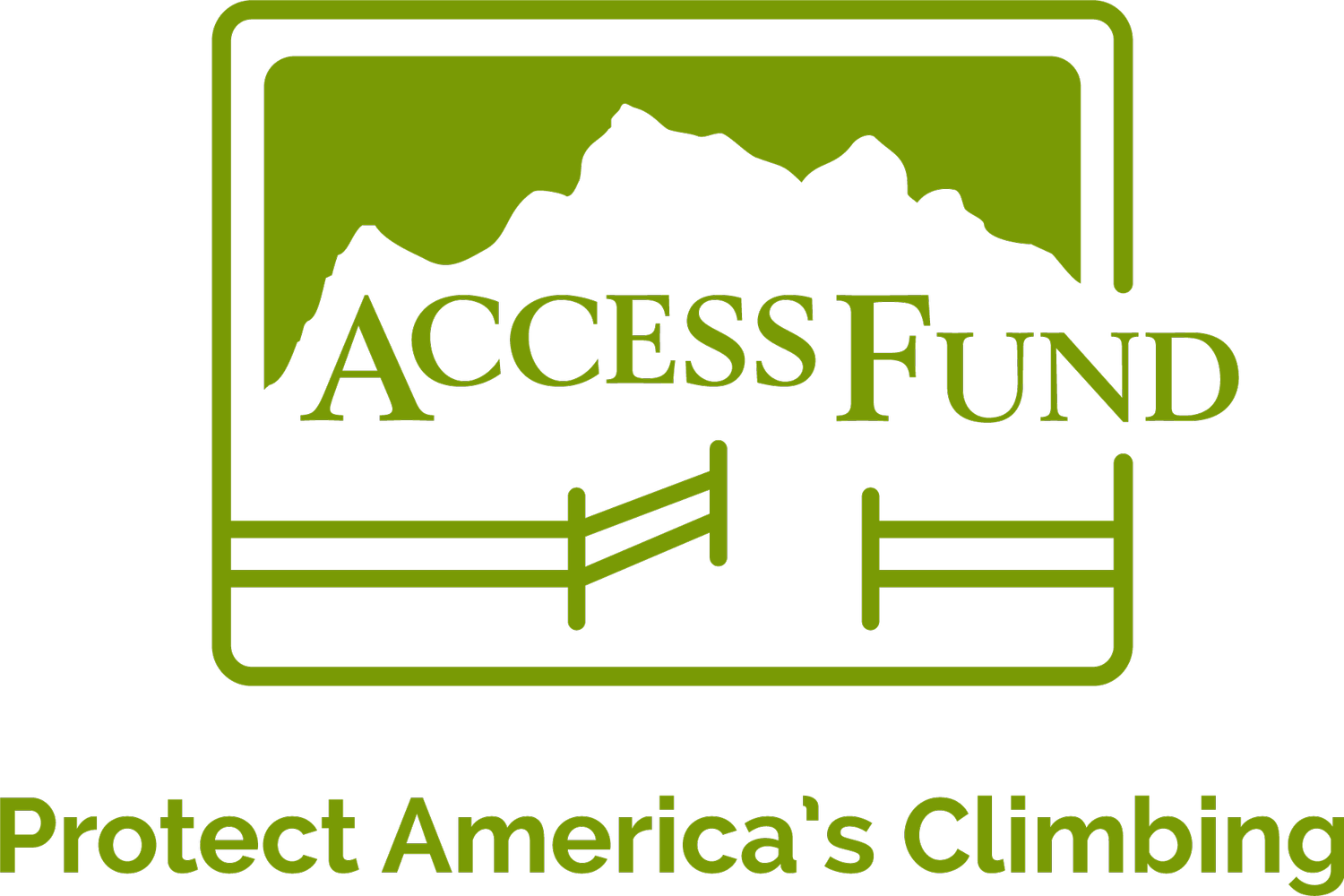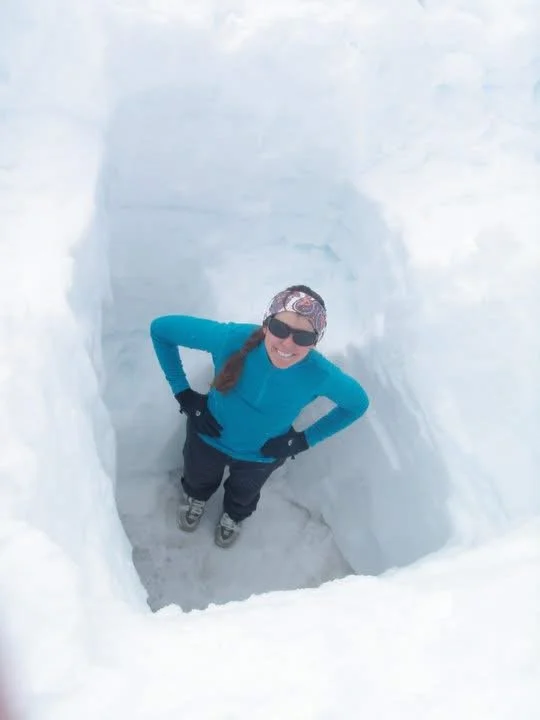At Access Fund, our team is filled with passionate people who wear a lot of hats—scientist, climber, advocate, policy buff. Katie Goodwin is all of those and more. As Western Regional Director and Policy Analyst, she works at the intersection of science and advocacy, translating complex environmental data into real-world policies that protect climbing access across the West.
We sat down with Katie to talk about her unconventional journey, the science behind climber waste (yes, poop!), the fight for fair land management, and how her experiences have shaped her approach to climbing advocacy.
Q: Let’s start at the beginning—what sparked your interest in conservation and how did that lead you to climbing advocacy?
Katie: I’ve always loved being outside. In college, I found myself drawn to natural resource management—it combined science with the outdoors and gave me hands-on experience through fieldwork. That eventually led me to pursue a master’s in environmental science, partnering with Denali National Park on a climber waste study on the main climbing route up Denali.
I spent three months on the Kahiltna glacier researching how human waste impacts the environment and water quality downstream. Climbers were tossing their poop into crevasses, assuming it would just disappear. But Denali sees over two metric tons of waste each year, and glaciers act like conveyor belts—eventually pushing everything out into the watershed below. We sampled 47 miles downstream and found E. coli in the water. It was the first study of its kind, we published our study in Arctic, Antarctic and Alpine Research. This study helped shape waste protocols not just on Denali but across other arctic climbing zones too.
After grad school, I worked for about a decade as an environmental consultant. I prepared NEPA documents, raptor surveys, and other fieldwork for big development projects. But I wanted to get closer to my passion for climbing and conserving public lands. When Access Fund posted a job opening, I applied—after all, I had a literal master’s in climber poop! Ten years later, here I am.
Q: Speaking of poop…it sounds like waste management has followed you through your career?
Katie: It really has! Before Denali, I worked on cruise ship discharge monitoring in Alaska—making sure onboard wastewater treatment systems met EPA standards. I ran a water lab, sampled wastewater, and tested for E. coli among other things. At one point, I was blending pounds of poop to simulate glacier conditions in a deep freezer, just to study how it broke down. Spoiler: it doesn’t.
Even now at Access Fund, I’m working on climber waste issues—like getting trailhead toilets installed. It sounds simple, but it can take years to get approval and funding. Waste isn’t glamorous, but it’s a huge part of minimizing climber impact.
Q: How would you describe your role at Access Fund today? What issues are you working on?
Katie: I’m the Western Regional Director and a Policy Analyst. I work with land managers across the West on climbing management plans, environmental reviews, and legislative policy. A lot of my work happens behind the scenes but directly affects your ability to access climbing areas.
Right now, we’re tracking a lot of forest and climbing management plans, especially as the current administration is rapidly reshaping public lands policy. One major issue over the years is the lack of national guidance from the Forest Service on how to manage climbing. That means every forest district makes up its own rules. We're pushing for consistency and balanced, science-backed planning.
Climbing Management Plans (CMPs) are especially important—they outline everything from new route development to habitat protections and bolt replacement. If we’re not at the table early, we risk losing access or being subject to restrictions that aren’t rooted in science or reality.
Katie representing Access Fund at Climb Smart 2024 © Outdoor Alliance,
Q: You’re also a published researcher—can you share more about your latest work and why it matters for climbers?
Katie: I recently collaborated with Colorado State University on a study about climbing’s impact on cave-roosting bats. Dr. Robert Shore, a longtime bat researcher, realized climbers often visit environments where bats live—cracks, cliffs, caves—so we supported CSU’s efforts to launch Climbers for Bat Conservation to gather sightings and data from climbers.
The paper offers the modern peer-reviewed guidance on managing climbing in bat-sensitive areas. It’s a starting point to help land managers and climbers navigate these issues more consistently. We also see similar concerns with raptors, big horn sheep, green salamanders—species that coexist with climbers and require thoughtful management.
Q: For everyday climbers, why should wildlife issues like bats or raptors matter?
Katie at Access Fund’s 2025 Advocacy Conference, where she presented on two panels—The Impact of Volunteer Raptor Monitoring Programs and Engaging on Federal Management Plans and Policies.© Adrian Montaño
Katie: It’s simple: your access depends on it. When land managers find sensitive species in climbing areas, they often issue seasonal or permanent closures. At Access Fund, we support those closures when they’re grounded in solid science—and we advocate for fair treatment of climbing compared to other, more disruptive activities like mining or logging.
Supporting wildlife and climbing access isn’t mutually exclusive. The more climbers understand and engage, the more successful conservation efforts are—and the more access we preserve. These issues are directly connected.
Q: You’ve done everything from glacier fieldwork to big wall climbing. How has your climbing experience influenced your advocacy work?
Katie: I actually learned to climb ice before rock. I needed rope systems and glacier travel skills for my grad research, so I got paid to become a mountaineer! I didn’t start rock climbing until my late 20s. I took a year off, lived on the road, and climbed across the West—Red Rock, Yosemite, the High Sierra. I love alpine and trad routes, anything remote and wild. I’ve barely set foot in a gym.
That lived experience helps me in my role now. I understand what climbers value and what’s at stake when access is threatened. It also helps build trust with land managers because I can speak both languages—science and climbing.
Want to support Katie's work?
Access Fund is fighting every day to keep climbing areas open and protected. Become a member or donate today to help us protect the places you love to climb.






